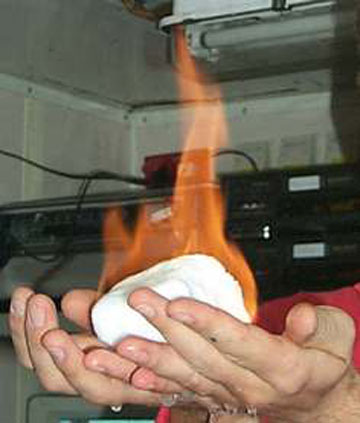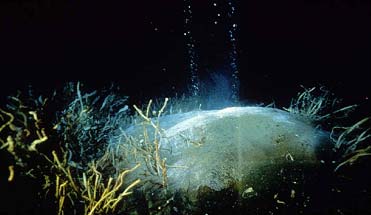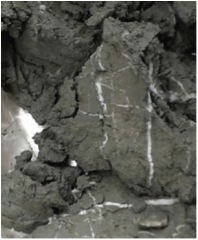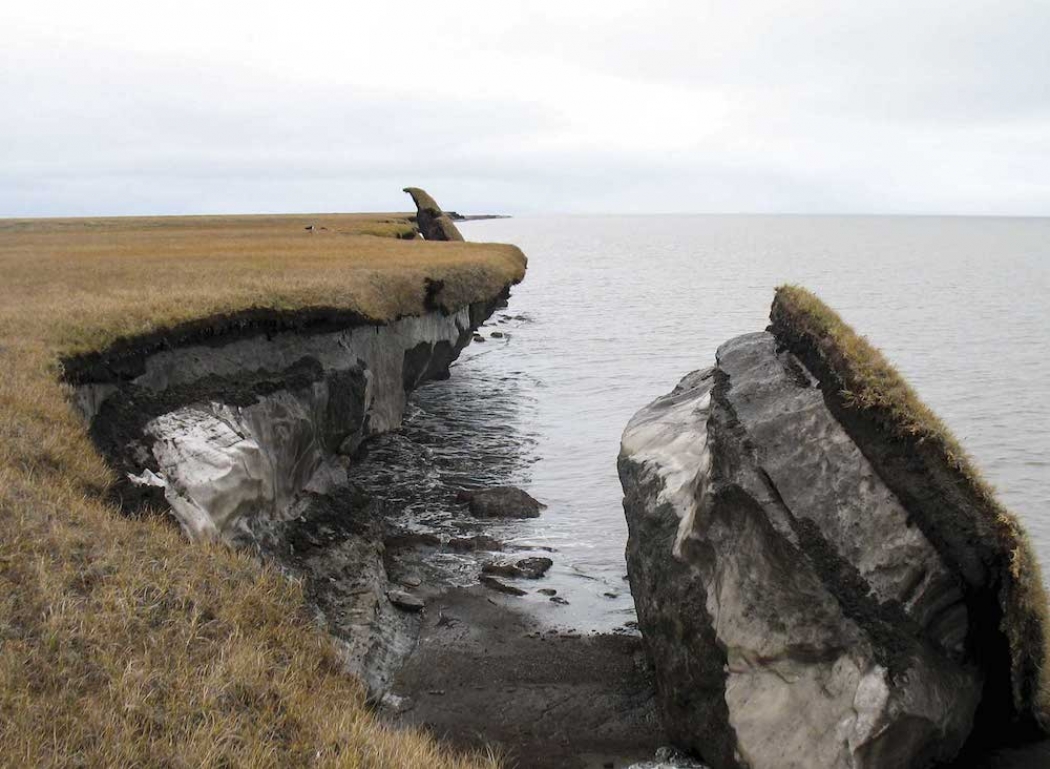ACE Report: What the Heck is Methane Hydrate?
Open Google Doc of What the Heck is a Methane Hydrate?
By Rebecca Anderson, ACE Director of Education

A methane hydrate (or methane clathrate, as it’s also called) is this. (See picture.)
Yes, it looks like ice that’s on fire, which is why one nickname is “fire ice” but it’s not really ice. It’s methane, surrounded by a cage of water molecules that forms a solid.
Yes, weird.
Gas + liquid = solid. Who knew?
Where do you find these things?
For a long time, the idea of a clathrate (a gas trapped in a cage of another molecule) was just a wacky science experiment – people had made them in a lab, but no one thought they actually existed on Earth naturally. It wasn’t until the 1960s that methane hydrates were found in the real world – in a gas mine in Siberia. Gradually, scientists realized that methane hydrates existed all over the world, most of them buried in mud at the bottom of the ocean where temperatures are cold enough and pressure is high enough for them to form. The methane to make them comes from the same plankton getting deposited on the seafloor over millions of years that form fossil fuels, except that in this case the methane gets locked up in a hydrate.
Methane ending up as a fire ice is actually much more common that you might think – the USGS estimates that the amount of carbon in methane hydrates is more than twice as much as in all other known fossil fuels on the planet. (Obviously, this is a really hard number to quantify, but the USGS calls their estimate “conservative.”)
Why should we care about them?
In my research about these kooky critters, I found two different camps: One that’s interested in methane hydrates as a possible energy source and another that’s interested in them as a future cause of climate change. In the first camp is the U.S. Dept. of Energy, which has a National Methane Hydrates R&D Program whose purpose is to study these phenomena in order to learn how best to extract them and use them as an energy source. They’re concerned with how to drill for them safely, how to determine where they exist and in what kinds of deposits, etc. Some deposits are large mounds of fire ice like this eerie picture and some just fill in tiny cracks in mud.

The other research around methane hydrates concerns their potential to affect future climate change. There’s a narrow range of temperature and pressure conditions where these things can exist beneath the ocean. Most locations are more or less stable and deeply buried, but in the Arctic, especially cold water allows the hydrates to form at lower pressures, aka shallower depths. Being closer to the surface makes these hydrates more vulnerable as the Arctic warms up.
The main cause for concern is that the Arctic Ocean could warm up to the point where the methane hydrates aren’t stable any longer and could melt and release their stored methane to the atmosphere. RealClimate.org calculates that although this is a possibility we can’t rule out, it would more likely be a slow process, gradually releasing methane into the atmosphere and not actually the dramatic upheaval of the ocean floor that comes to mind.

Methane hydrates also live buried in permafrost on land. In one spot on the coast of Siberia, the ocean has eaten into the coastline, breaking off chunks of permafrost into the sea. Methane concentrations in the ocean off this spot are 25 times higher than normal, indicating that methane from the permafrost is leaking out into the ocean and then the atmosphere. So melting permafrost is a worry, too.
In RealClimate’s calculations, there’s no single event, like the melting of methane hydrates, that could catastrophically release so much methane into the atmosphere that could trigger a doomsday scenario. All single point sources of methane are well below that level. However, the far less dramatic (but way more likely) scenario of steady, ongoing release of methane to the atmosphere from lots of sources, like permafrost, rice paddies, cows, etc. does have the potential to be make or break whether we cross a tipping point or no.
One final interesting note I learned is that the CO2 that’s produced once the methane in the atmosphere breaks down is just as important for causing climate change as the methane itself. (Methane lasts in the atmosphere for less long than CO2, with a lifetime of about a decade.)
To wrap it up, here’s my Top 5 Things To Know About Methane Hydrates. They are:
- Cool and mysterious
- A very big, but badly quantified, reservoir of carbon
- A potential fuel source
- Something to keep an eye on for future climate change
- And an exciting party trick (if you can get your hands on one)
What the Heck is a Methane Hydrate?
Student Worksheet
Name:
1. What is another name for “hydrate”?
2. Describe what a methane clathrate is.
3. Why is it called “fire ice”?
4. When were naturally occurring methane hydrates first discovered? Where?
5. Where do most of the methane hydrates in the world exist?
6. What deposits enable methane to form under the ocean?
7. Compared to all other known fossil fuels on the planet, how much methane hydrate is thought to exist, according to the USGS?
8. Has anyone successfully found a viable way to obtain these as a fuel source? If so, who?
9. What is the concern regarding methane clathrates regarding climate change?
10. Why is melting permafrost in Siberia a concern?
11. BIG PICTURE: Why should we care about the release of methane in the environment? (You’ll have to do some research here.) How powerful a greenhouse gas is methane? What is it’s “warming potential”? What percent of global warming comes from methane?
